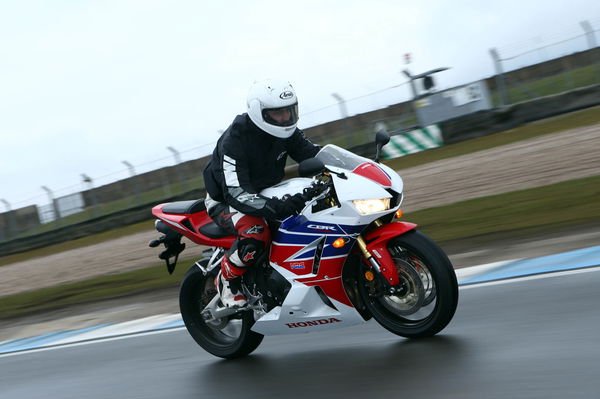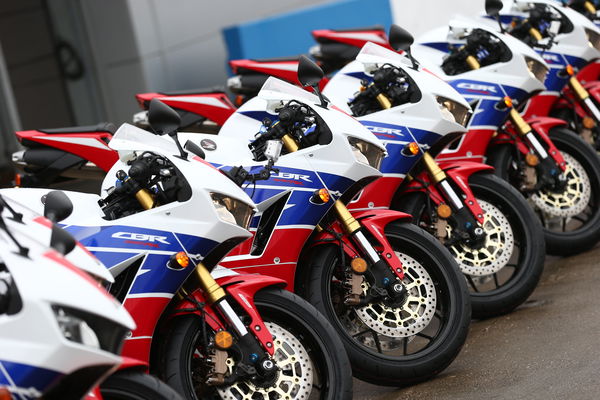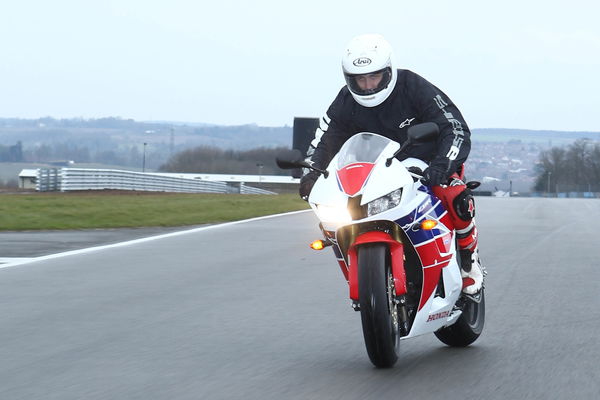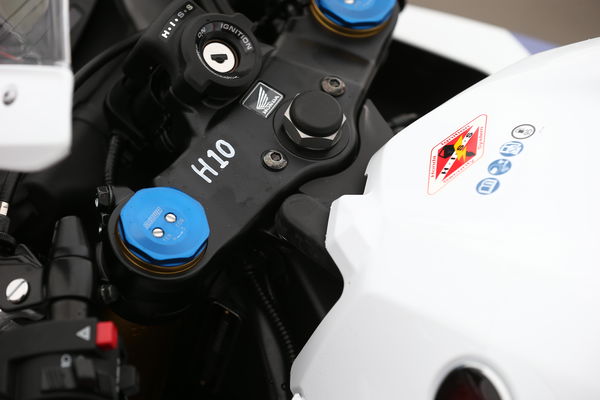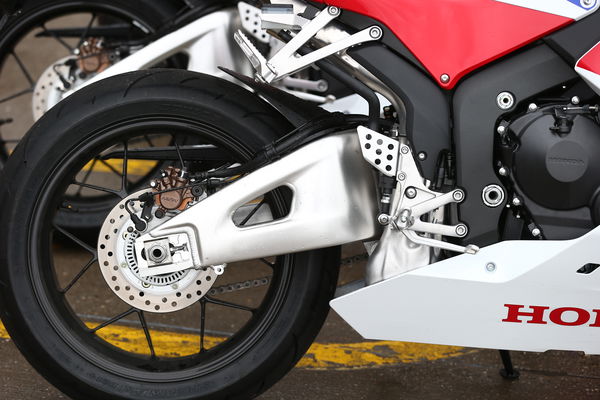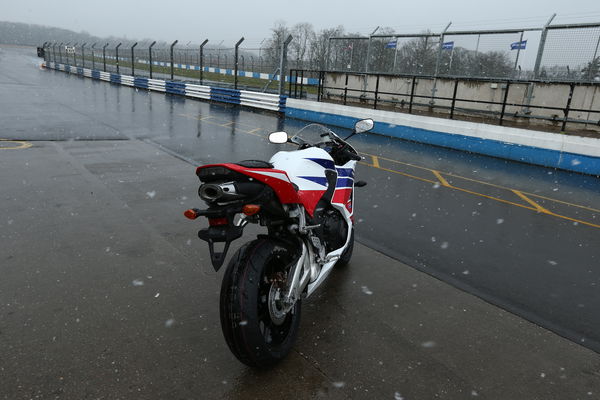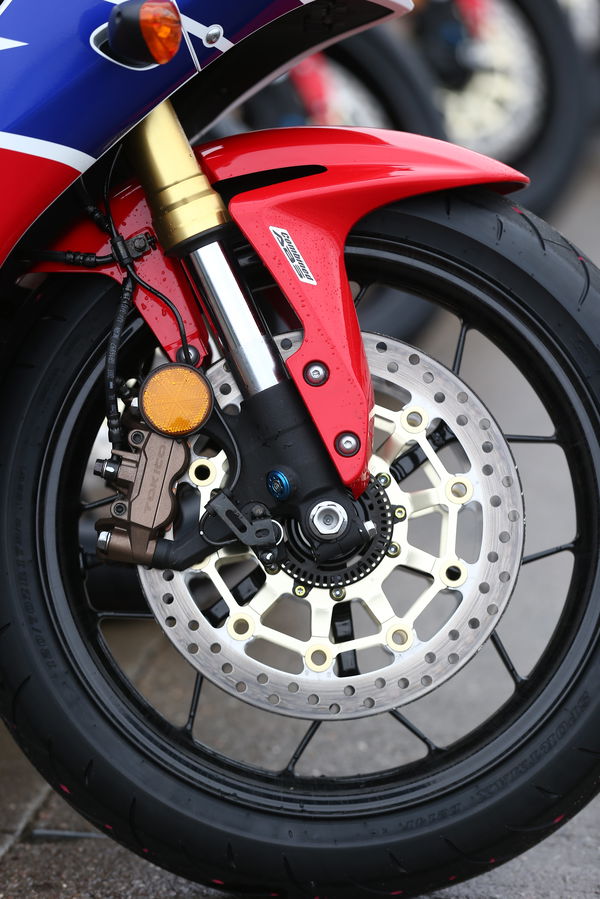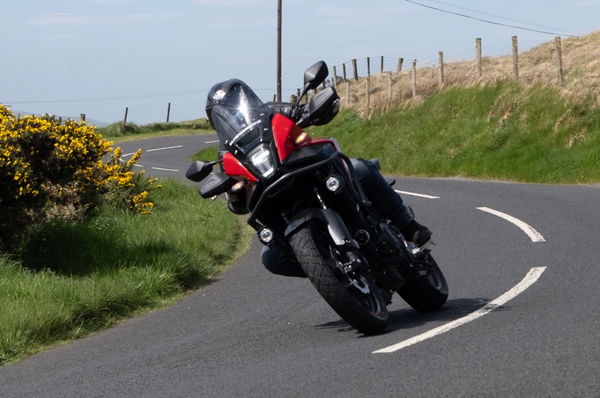First Ride: 2013 Honda CBR600RR C-ABS review
At a freezing-cold Donington where even the mighty Ron Haslam struggled to get heat in the tyres, we ride Honda's revised Supersport offering. In between mugs of hot tea.
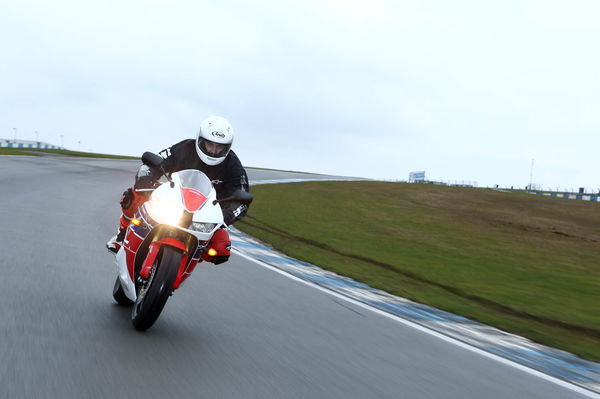

GLORIOUS Donington Park, the battlefield for some of racing’s great encounters. Rossi vs. Everyone in 2005, Senna vs. The Rain in 1993 and Kiyonari vs. Superpole in 2008. It’s a circuit that brings out the best in racing, both four wheels and two - and in the wet it's generated some amazing scenes. A soaking-wet Donington was the perfect place to launch Honda’s latest Supersport contender, the not-all-new but revised and updated-for-2013 CBR600RR; a bike that suits Donington’s flowing curves and high corner speeds. Perfect were it not for the gentle sprinkling of snow trying to settle ontop of the rainfall. The only thing flowing was the river of icy cold water making its way down Craner Curves.
On the same day the BSB tests were cancelled at Snetterton, we soldiered on. What we lacked in tyre warmers, we more than made up for with cups of tea and a healthy amount of British stiff upper lip and delusional optimism. It could be worse: at least the snow’s not settling.
The new 600RR is more than just a facelift, but its raft of minor tweaks were largely ignored by onlookers who were caught staring at the new front end in the same way a rabbit sits frozen, staring at the front-end of the car that’s about flatten it. The ability to take anything else onboard was lost among most of us.
What’s great about Honda is that they rarely boast about what they do and for a company with such a strong range, that’s refreshing. They just seem to get on and do it. But by getting on and doing it, they don’t shout about what they’ve done, which results in bikes like the 2012 and 2013 CBR600RR being overlooked because people assume it’s just the old bike with new colour options.
The single largest feature on the new bike is the Combined ABS featuring ‘Brake-by-Wire’ technology which is now standard fitment, not an optional extra. It’s not brand new, the technology has been around since 2009 and C-ABS was a fitment on the 2012 model but what has changed for 2013 is that in the UK, you’ll no longer be able to buy a new CBR600RR without ABS.
The ‘Brake-by-Wire’ system works like this: when you squeeze the brake lever, the brake fluid puts pressure on sensors in the ‘Brake-by-Wire’ clever box of tricks. The brakes-only ECU senses the pressure, assesses front-and-rear wheel speed and then commands two servos that relay that hydraulic pressure into the brake calipers themselves. Apply the front brake and the rear brake will also work to keep the bike stable. However, Honda states that the application of a ‘small’ amount of rear brake won’t cause the front brake to come on. So slow-speed control shouldn’t be affected.
With no direct connection to the brake calipers, you’ll no longer get a pulsing at the levers when the ABS kicks in. If the system fails, the brake pressure and fluid will bypass the clever box of tricks and the brakes will work in exactly the same way as a conventional setup.
Honda claims it delivers optimal braking force for every situation without locking a wheel. It does sound like a worryingly complicated system that solves a problem no-one really had or at least, ever knew they had. The software has been tweaked for 2013 to increase the amount of rear-brake bias.
It can’t be switched off. You can, however, stick two fingers up to ‘the man’ and remove the fuse.
The second notable change - and this time it’s a genuine new addition - is the use of Big Piston Forks. If you haven’t ridden a bike with them, you should. They’re handling in High Definition. The latest Fireblade has 43mm Big Piston Forks while the new CBR600RR’s are 41mm.
ABS and Big Piston Forks are good ingredients for a trustworthy front-end but you need the tyres to match.
Other changes include the new 12-spoke wheels, which are barely any lighter than the 2012’s wheels but don’t they look fantastic? Although the weight of the wheels has hardly changed, Honda claim their structure allows for the mass to be positioned away from the outside of the rim, therefore showing some of the advantages of lighter wheels. They look amazing, enough said.
The fuel injection mapping has been tweaked along with the Direct Air Induction System (ram-air) to offer marginal improvements to fuel efficiency and performance. That’s your new 2013 CBR600RR.
Once the snow had passed, it was time for action. Of sorts. Ron Haslam went out on a recce and after six laps he came in, which was good news in itself. Try as he might, Ron couldn’t get any heat in the tyres. “It’s like riding on ball-bearings out there” he said. Those are the sort of confidence-inspiring words you need to hear before being ushered towards your bike.
What followed was a ride I won’t forget in a hurry. We left pitlane like a group of Himalayan explorers connected by a single rope. Except our rope was invisible. Everyone stayed in line, cautiously feeling our way down Craner Curves. I expected to see at least one person go down, but we made it through. I took on the next few corners up to Coppice as timidly as when I get kicked out of bed at 3am to go and confront whoever might have broken in. I crept up on Coppice and having not had a front or rear moment for at least 100 metres, got on the power with a touch more confidence than before. With the straight opening out in front of me, I made microscopic openings to the throttle and with next to no warning, the rear let go. No problem, just a small one. I lost a few metres on the guys in front, which, thanks to the C-ABS, I clawed back with little skill or judgement.
Our invisible rope was still connected and the lead rider couldn’t get away. Despite the confidence while braking that the ABS offers, it was so difficult to build up any trust in the front. It just wouldn’t show any signs of coming up to temperature. Picking my way to the front of the pack, once I found myself in front, I was quickly swallowed up again. The rope was still connected. As the rider in front edged away under power, it became an easy game to reel them back in on the brakes.
It was like a race in slow motion. I could almost touch the guy in front of me, but I was still a good second behind him. Every movement had to be carefully considered and executed. With every additional degree of throttle or lean, danger lurked close by.
Aside from how good the brakes are, what stood out to me during these 15 laps in slow-motion was how sharp the throttle is and how little grip the Japanese-spec Dunlop D214s could offer in such conditions.
It’s not fair to fully judge a bike based on these conditions but the throttle response was there the moment you touched it, meaning the smoothest way to exit the hairpins was to carry a higher gear and slip the clutch to smooth things out. The tyres were the Achilles' heel to the whole package and if I was buying a new CBR600RR - for road or track - I’d replace them for Michelin’s Pilot Road 3, Bridgestone’s S20 or Metzeler’s Roadtec Z8. It’s worth noting that whatever the tyre, the grip just wouldn’t have been there, but I have no doubt those other tyres would have offered better feel and more confidence because the tread would have been able to move.
The throttle response will no doubt be fine on the road and great on the track but its response from a closed throttle to open was too sharp for the conditions we were in.
While I don’t want to start off a ‘600s don’t need traction control’ debate, I am surprised Honda doesn’t offer it on the new CBR600RR. It has almost all the sensors in place to run traction control. I suspect someone deep inside Honda doesn’t like traction control and presumably thinks it suggests ‘this bike is unstable’ but whoever that person is, has clearly never ridden in arctic conditions on Dunlop D214s.
The other aspect that I feel is lacking is the ABS’s absence of a ‘Track’ mode. While you can get the rear to step out under braking if you drop it down the gears and flick out the clutch, when you’re braking hard on the front then looking to carry the rear a touch, it is always connected to the front and always applying the front brakes. It wouldn’t have been hard to disconnect it; BMW, Ducati and Triumph have all managed it. It feels to me like Honda knows better and I’m not convinced they always do.
I’m going to take the 2013 CBR600RR for a proper road and track test once the weather sharpens up and then I’ll be able to deliver a full verdict. For now, you know a little more on what the bike’s about. Meantime look out for some good weather and take one for a test ride.
Model tested: 2013 Honda CBR600RR C-ABS
Colours: Repsol, Black and Red/White/Blue
Price: £9,500
